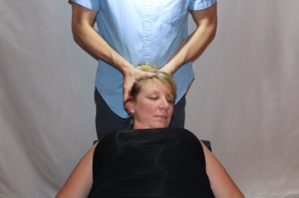We recently read with interest a case report in 2020 by Dr. Odderson in the Journal of Clinical Neuroscience describing the resolution of Cervicogenic Vertigo using botulinum toxin (botox).
Albeit a short literary piece, Dr. Odderson provides sufficient information with cause/effect relationship of success using botox for Cervicogenic Vertigo after failed physical therapy, course of prednisone and two cervical epidural steroid injections.
Now before you go off and recommend botox for your dizzy and neck pain patients, let’s highlight 6 clinical characteristics about the patient as described in the study (in bold) and OUR impression (not bolded):
- This patient was also diagnosed with cervical dystonia by EMG.
- Anyone who has treated a patient with cervical dystonia knows it is not straightforward cervical case, especially if adding on 10 years following a traumatic event and multiple system involvement to cause dizziness.
- I have actually recommended botox for cervical dystonia patients (which is also recommended in the literature) if no success with other conservative measures. This pathology can be challenging and with it now in the literature, the typical signs and symptoms may not be as traditional as we first thought. This takes us to other characteristics.
- She had onset of symptoms with full cervical rotation to the left
- Over 2/3 of patients with Cervicogenic Dizziness have symptoms with cervical extension, which was not mentioned in this article. Rotation is second most common, such as in this case and some of our cases too.
- She had symptom reproduction at times when lying in bed.
- Cervicogenic Dizziness provocation is more positional, not positioning. Meaning, positional movements (such as ROM as described above) brings on symptoms with minimal latency and fatigues if provocating maneuver is reduced.
- Potentially, with the amount of stenosis as described in the case report, would create more of an upper cervical extension moment, placing undue compression on the upper cervical spine (and oblique capitis superior that was prominent in this case). We see headaches and neck pain > dizziness arise with this position.

- The patient would, at times, have to lie down due to symptoms so bad it would make her nauseated.
- It is a general rule that Cervicogenic Dizziness is not as “functionally limiting” or “severe” as a peripheral vestibular condition (such as BPPV). Even Susan Reid’s 3 question clinical prediction rule helps us as clinicians consider symptoms that “keep the patient more at home” as NOT to be cervical in nature vs other causes.
- Again with the cervical dystonia present, the amount of abnormal afferent information to the vestibular nucleus could have significantly altered postural control and head on neck awareness to make the patient this ill.
- The cervical vertigo presented with episodic bouts of dizziness, where the environment would move for her.
- It has been well-established in the literature (we have even written several posts on it too) that someone with dizziness arising from solely the cervical spine, or extra-cranial origin, is not described as the room spinning (i.e. vertigo).
- I cannot say I am an expert at cervical dystonia, but possible the altered afferent proprioceptive projections from cervical and nuchal musculature (C1-4) is enhanced in this population and significantly overloads the signals to the vestibular nucleic complex.
- Anyone in neuromusculoskeletal physical medicine avoids “never and always” and again, this case could debunk our typical descriptors of dizziness in this population.
- With this being said, we are moving away from descriptors and move towards timing and triggers for our dizziness diagnosis as we describe in our course.
- It has been well-established in the literature (we have even written several posts on it too) that someone with dizziness arising from solely the cervical spine, or extra-cranial origin, is not described as the room spinning (i.e. vertigo).
- The patient “failed” physical therapy
- Ah, as physical therapists, we hate this term! It’s like saying, “doctoring failed” or “nutritioning failed”, etc You get the point.
- Yes, prednisone and cervical injections failed too — but we can all agree that there is a certain dosage, location (by mouth or location in spine) that is specific to these procedures, thereby, knowing its cause / effect action.
- We have a phenomenal profession don’t get me wrong, but we do know that not all physical therapy is created equal. Questions arise, such as:
- Did this patient receive manual therapy?
- If so, what type of manual therapy?
- Did this patient receive a more advanced clinical reasoning management approach or general stretching program to the upper trapezius? (Our most popular article…)
- Was the therapist more of a “vestibular” therapist?
- Many (but not all!) of vestibular therapists don’t really address the cervical spine.
- Ah, as physical therapists, we hate this term! It’s like saying, “doctoring failed” or “nutritioning failed”, etc You get the point.
Lots of questions remain for me for but overall a great case study here! I really enjoy reading these as it helps professional allies come together to work mutually to help these patients. I want my physical therapy colleagues to know about the positive effects of botox for certain patients and for my medical colleagues to realize these impressions (numbered 1-6 above) of how a physical therapist thinks!
You can learn more about the screening and treatment process of Cervicogenic Dizzinesss through Integrative Clinical Concepts, where the authors (husband–a manual therapist a wife—a vestibular specialist), teach a very unique course combining both the theory and practice of vestibular and manual principles in their 2-day course. Pertinent to this blog post, the 2nd day includes the “Physio Blend”, a multi-faceted physiotherapist approach to the management of Cervicogenic Dizziness, which includes treatments of the articular and non-articular system of manual therapy and the most updated sensorimotor exercise regimen.
If you would like to host a course for your staff (either a vestibular, neuro, sports or ortho clinic), please do not hesitate to contact me at harrisonvaughanpt@gmail.com for more information.
AUTHORS
Harrison N. Vaughan, PT, DPT, OCS, Dip. Osteopracic, FAAOMPT
Instructor: Cervicogenic Dizziness for Integrative Clinical Concepts
Danielle N. Vaughan, PT, DPT, Vestibular Specialist
Instructor: Cervicogenic Dizziness for Integrative Clinical Concepts
- NEW - Online Discussion Group
- Live cases
- webinars
- lecture
- Live Q&A
- over 600 videos - hundreds of techniques and more!
- Check out MMT Insiders

















Post a Comment
Post a Comment